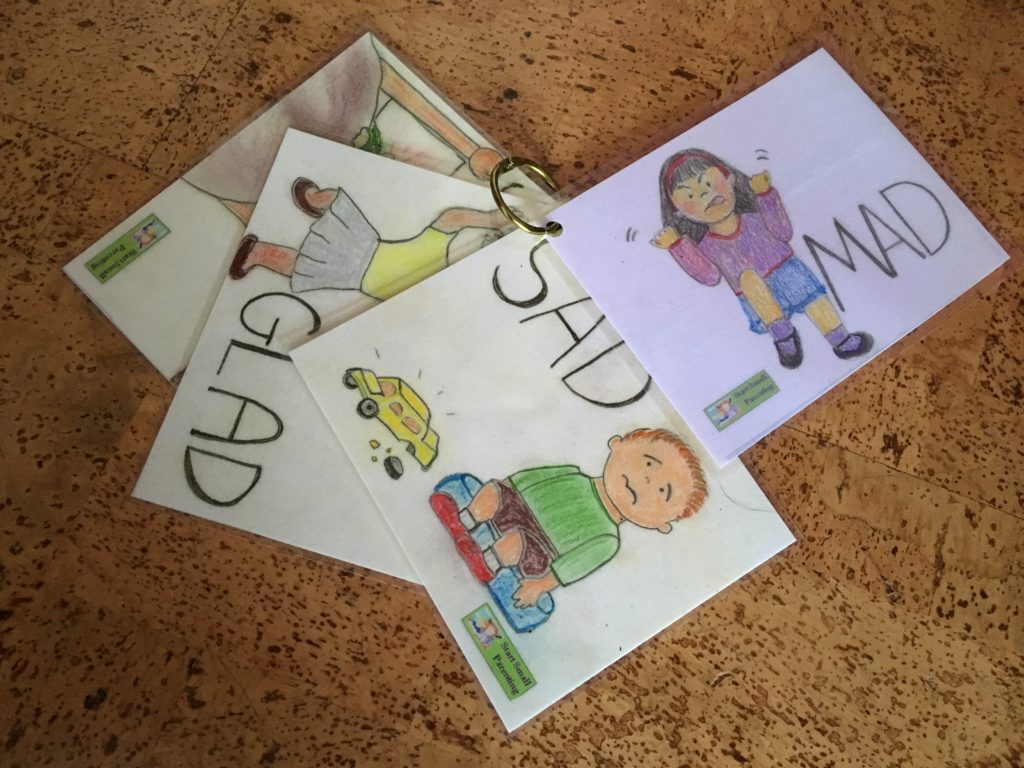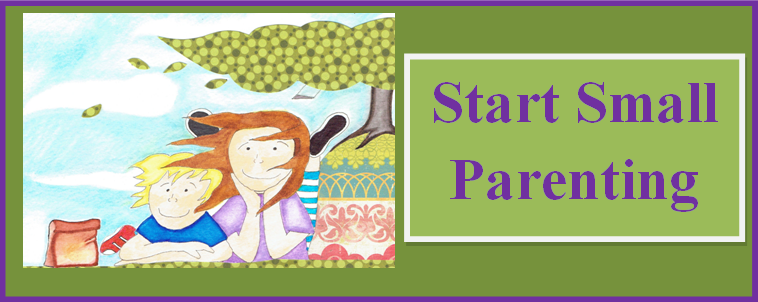 “Be like a mirror – reflect back what you think, feel and sense that the speaker is saying and feeling. Work to clear the mirror so that you can reflect more clearly.” – Edwin Rutsch, director of Center for Building a Culture of Empathy
“Be like a mirror – reflect back what you think, feel and sense that the speaker is saying and feeling. Work to clear the mirror so that you can reflect more clearly.” – Edwin Rutsch, director of Center for Building a Culture of Empathy
By using Reflective Listening, the Mirror Back tool provides a safe container for your child’s emotional experiences. I still remember two main elements of a class I took in the 80’s on Reflective Listening:
- Listening – Active listening skills used to better understand the speaker (speaker by stepping into his shoes).
- Reflective – Offer words or ideas back to the speaker to demonstrate understanding that person’s needs and feelings.
An important part of reflective listening is that desire to understand. It’s the ability to step into your child’s shoes and imagine their frame of reference. You use your senses. You listen for meaning and feeling. If you can come closer to seeing the world the way your child sees it, you can more easily understand how he feels. Whether verbally or non-verbally, you give off the message, “I understand,” or “I’m with you.” The listener is there to hear without judgment, like a mirror.
How to Mirror Back to Your Child
First, take a deep breath (or 5!) Listen closely and quietly. Describe what you see, without judgment. Acknowledge the child’s feeling with a word or statement, as specifically as possible. Put your own feelings aside. Try not to interrupt, argue, defend, or justify. Here is an acronym to help when you are in the moment with a big emotion. Choose one.
D.E.W.S.A.Q.
Describe, Empathize, Wish-fulfillment, Suggest, Accept, Question
Describe the feeling. Give a commentary on what you notice, almost like a news announcer:
“You look sad.”
“I see tears in your eyes.”
“When your jaw is tight, I sense that you are angry.”
“I can see your fists are clenched. You are really frustrated right now.”
“You sound happy. There is a laugh in your voice.”
“You look tired. Your eyes are drooping.”
Empathize. Use sounds such as “Mmm,” or “Oh” when the child is describing a situation to demonstrate your attention and non-judgmental response. You can say something heartfelt and short so as to not take away from her experience. “Ohhhhhh,” “I know,” “What a bummer,” and “Tell me more,” are a few suggestions. You can give a hug or some other form of loving touch. Use one of these or come up with your own way to show your loving presence. Allow tears and futility. Tears are a healthy expression of emotions. When a parent says, “Now, now. Don’t cry,” the goal is usually empathy, but the effect can be emotional shut-down. There are many ways to show empathy and let the child know you are there for her.
Wish-fulfilment. Use a wish or fantasy to help the child experience what he wants, even though in reality he can’t have it. This technique has been proven to help the brain calm through disappointments.
“Wouldn’t it be great if we could eat only cookies for dinner?”
“Do you wish we could stay at the park past dark.”
“Wouldn’t it be wonderful if you didn’t need sleep?”
Suggest what they might be feeling, especially if they are not yet able to say:
“I don’t think you liked that.”
“Something must have upset you.”
“When he took your toy, you seemed angry.”
“You might feel sad that Mommy is out of town.”
“Perhaps you feel disappointed because your friend couldn’t come.”
Accept the feelings that to come to the surface, not just the ‘good’ ones. Resist telling the child not to be mad or to buck up.
“You are allowed to be angry at Mommy.”
“I understand that makes you irritated.”
“People feel jealous, just like you.”
“It’s okay to feel angry.”
Accept Feelings While Stopping Harm:
Accept the child’s feelings even as you stop unacceptable behavior. Teach the child that all feelings are acceptable, even though certain behavior is not.
“You are still angry about losing your book and you are kicking your desk. I can’t allow that. You can tell me about what is most upsetting about losing your book.”
“You are upset that Billy took your toy and you are hitting him. I can’t allow you to hurt Billy. You can tell me when you are upset when someone takes your toy and we can find a solution.”
Question to find out more about what your child might be feeling and their experience.
“Are you angry because Will took your toy?”
“I am wondering if you feel upset because you couldn’t have the doll you saw at the store.”
“Are you feeling hurt because Lily didn’t ask you to her party?”
“Are you mad because you wanted a different color?”
Tips for Mirror Back
- Don’t rehearse. Do be present. Listen and observe before speaking. For many of us, we have a limited filter, especially if we are feeling emotionally connected to or triggered by an event or behavior.
- Don’t interrupt. Do breathe and wait. Be patient and know there will be time for discussion, if not now, then later.
- Don’t use generalities. Do reflect back personal specifics.
- Don’t change the focus to yourself. Do keep it on the speaker. Try to step into your child’s shoes. Imagine their frame of reference and notice when you respond based only on your own perception.
- Don’t judge or defend. Do reflect back what you observe. Seek to understand the actions and emotions behind the words, better understanding your child’s experience.
- Don’t be definitive. Do check out what’s going on with words like “Probably” or “Maybe.” Respond with acceptance and empathy.
- Don’t try to fix the problem. Do encourage the child’s inner resilience and self-direction.
- Don’t expect a specific reaction from your child. It can be hard to admit to certain emotions, even if your guess is spot on. And your child might not agree with your assessment. The purpose is to help the child feel more understood and to know they are accepted even when they have uncomfortable feelings. Over time, the range of emotions you notice will help them to use words regarding their feelings rather than actions.
Feeling Words
Simple
Simple words work well when your child is first learning to talk. Corresponding emotion cards can help children identify these basic emotions.
Mad
Sad
Glad
Scared
More complex
As your child grows in understanding, use a variety of words to describe more nuanced emotions. This helps the child grow their Emotional Intelligence.
Lonely
Jealous
Frustrated
Excited
Confused
Shy
Worried
Angry
Unsure
Ashamed
Disappointed
Sorry
Proud
Embarrassed
Grumpy
Hurt
Surprised
Why Mirror Back?
One of the benefits of the Mirror Back tool is that it improves respect, trust, and mutual understanding. It can reduce a child’s urge to continue with an off-track behavior because an important need of being heard is being met. This in turn helps to reduce fustrations, whining, anger, and other off-track behaviors.
Mirror Back shows the child that feelings matter. Even complicated ones or feelings of discomfort are okay. The child is often more able to release their emotions and reduce tension.
This is an important element in creating a safe environment for children. Mirror Back uses witnessing, empathy, and understanding to demonstrate respect for the child, consider his worth as a person, and encourage his capacity for self-direction. This can lessen conflicts and misunderstanding while it strengthens cooperation.
While judgment can create defensiveness, the child is not threatened by a reflection of his experience. He does not have to defend it. He is able to have his own internal experience, exploring it and making his own decision about how realistic the observation matches what he is noticing. This puts the child in a position of awareness to the possibility of change if necessary.
Avoid the Fix-it Cure
One of the biggest challenges in cultural parenting is the emphasis on fixing things for the child. Whether this is doing for them what they can do or trying to do the Happy Dance and change uncomfortable emotions, the “Fix-it Cure” is rampant. For example, the child wants the blue cup. It’s in the dishwasher and the dishwasher is running. The Baby Self jumps in and the child cries and tantrums. I’ve observed many parents use the Mirror Back technique, but inadvertently follow it with the Fix-it Cure.
“You seem upset. You wish the blue cup was clean. [Fix-it Cure:]Here, look, the red cup is right here. Isn’t red a nice color?”
Do you see where Mirror Back took a turn to fixing?
Try this one:
“I hear you don’t like soccer. You want to stop playing. [Fix-it Cure:] Did you know Tommy down the street loves playing soccer? I bet you could like it as much as Tommy if you keep playing.”
The parent starts out with good intentions, but like many parents in our culture, can’t resist stepping in to try to fix the situation or change the child’s feelings.
Because this is all around us, it will take determination and practice for you not to jump in and rescue with the Fix-it Cure. Resist the temptation.
Parent Practice
To Mirror Back requires practice on the parent’s part. It may require some changes in the parents’ own perceptions and actions. When Mirror Back is modeled, it encourages the child to become a better listener and observer himself. This can be practiced at home and then transferred to school, relationships, etc. The child learns that listening can be met by listening.
When you want to throw up your hands in despair when faced with your child’s Big Emotions and full-on Baby Self, try to Mirror Back what they are going through. This can help the child and the parent get through a tough time. To observe and report back what you notice is a powerful way to respond to children.

